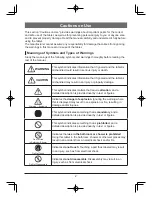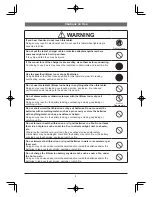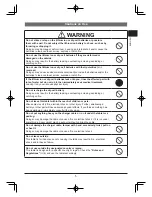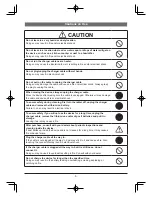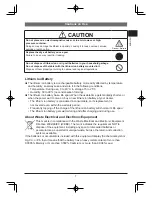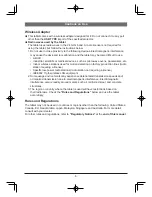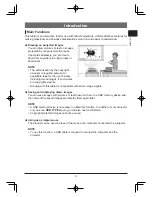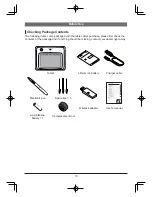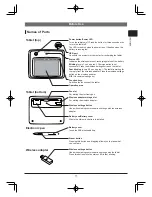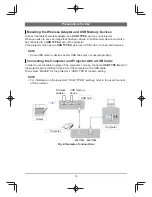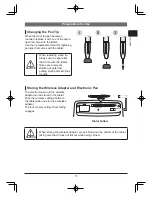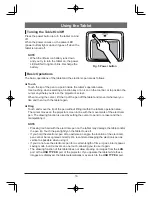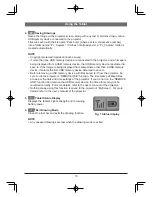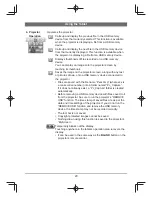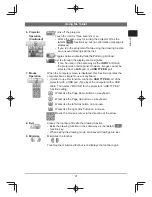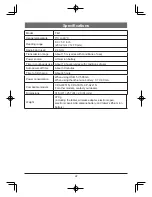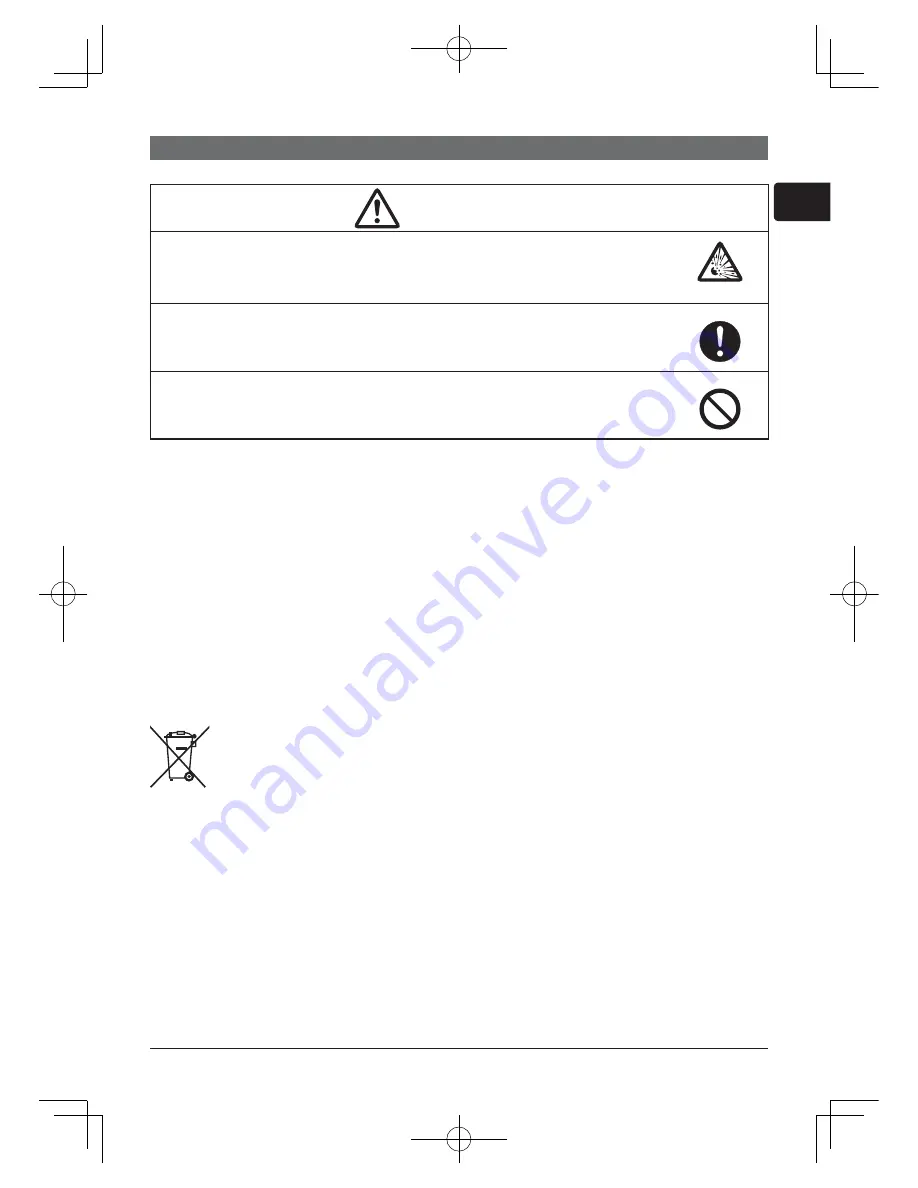
7
ENGLISH
Cautions on Use
CAUTION
Do not place on an electromagnetic cooker, or in a microwave or high-
pressure container.
Doing so may damage the lithium ion battery, causing it to leak, overheat, smoke,
explode or catch on re.
Warning—Explosive
Replace the dry-cell battery once a year.
Failure to do so may result in it leaking.
Do not dispose of lithium ion or dry-cell batteries in your household garbage.
Do not dispose of the tablet with the lithium ion battery mounted in it.
Dispose of them properly according to national and regional regulations.
Lithium Ion Battery
The lithium ion battery is a rechargeable battery. It is readily affected by temperature
and humidity, so always use and store it in the following conditions.
Temperature: During use, 0 to 40°C. In storage 15 to 25°C
•
Humidity: 30 to 90% (no condensation forming)
•
The lithium ion battery has a life span. When the usable time gets markedly shorter, or
when the power won’t come on, buy a new lithium ion battery at your dealer.
The lithium ion battery is considered a consumable, so its replacement is
•
not covered even within the warranty period.
Frequently topping off the charge of the lithium ion battery will shorten its life span.
•
The lithium ion battery gets warm during and after charging and during use.
•
About Waste Electrical and Electronic Equipment
This mark is in compliance with the Waste Electrical and Electronic Equipment
Directive 2002/96/EC (WEEE). The mark indicates the requirement NOT to
dispose of the equipment, including any spent or discarded batteries or
accumulators, as unsorted municipal waste, but use the return and collection
systems available.
If the batteries or accumulators included with this equipment display the chemical symbol
Hg, Cd, or Pb, then it means that the battery has a heavy metal content of more than
0.0005% Mercury or more than 0.002% Cadmium, or more than 0.004% Lead.


